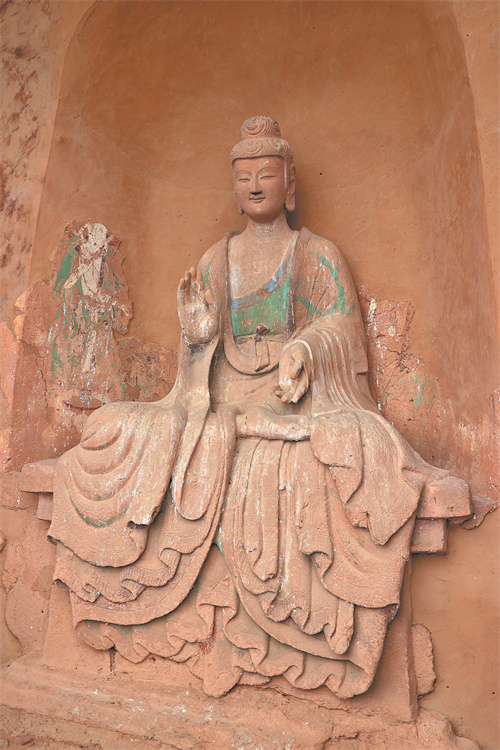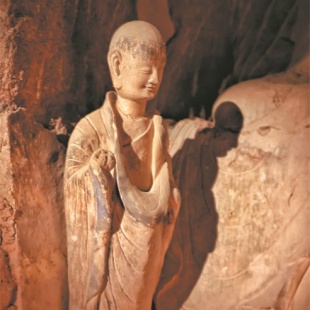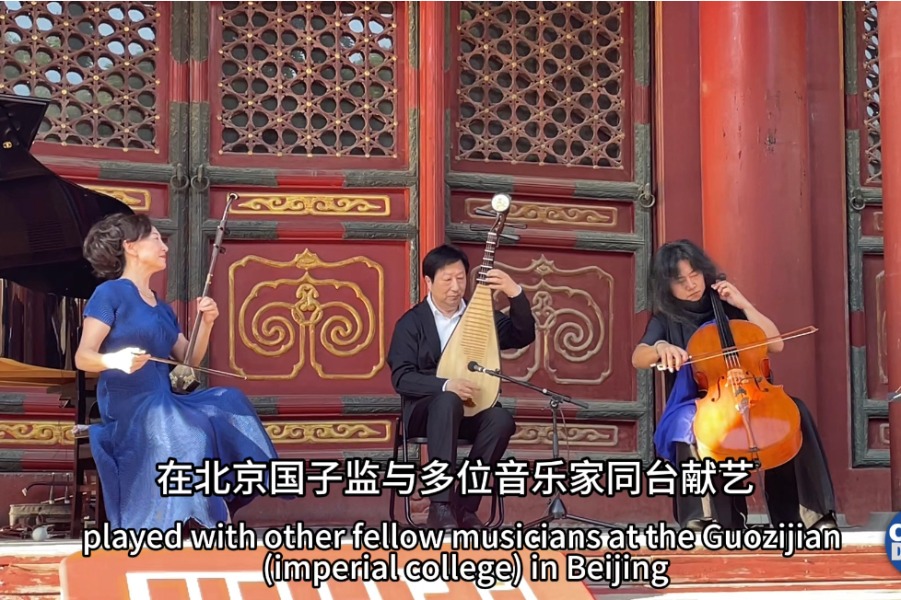Protecting mountains of relics


"In ancient times, people could build caves on the cliff using the trestle roads. Now, visiting the site and our protection work are impossible without the existing steel-reinforced concrete trestle roads built in the 1970s and 1980s."
After over four decades, the roads are part of the cultural heritage, and their safety and reliability continue to keep heritage protectors busy.
"We check the stability of the trestle roads every 10 years. By setting up monitoring facilities that record the level of shaking on key sections of the roads and other scientific methods, we have learned their load-bearing limits and concluded that they are very safe and reliable. Tourists are free to visit," says Hu with the protection and research office.
Maijishan is also taking preventive measures for protection through organizing human patrols regularly and building a monitoring system that collects information, including changes in the neighboring environment, the grottoes bodies and in the number of tourists. Based on the information, the system alerts to risks, such as storms and earthquakes; and offers reference for decision-making.
"Technology is becoming increasingly advanced, making our protective endeavors more precise. The work demands are also increasing. We want to do our best to extend the life of this cultural heritage," says Xu.
Ma Jingna contributed to this story.





































